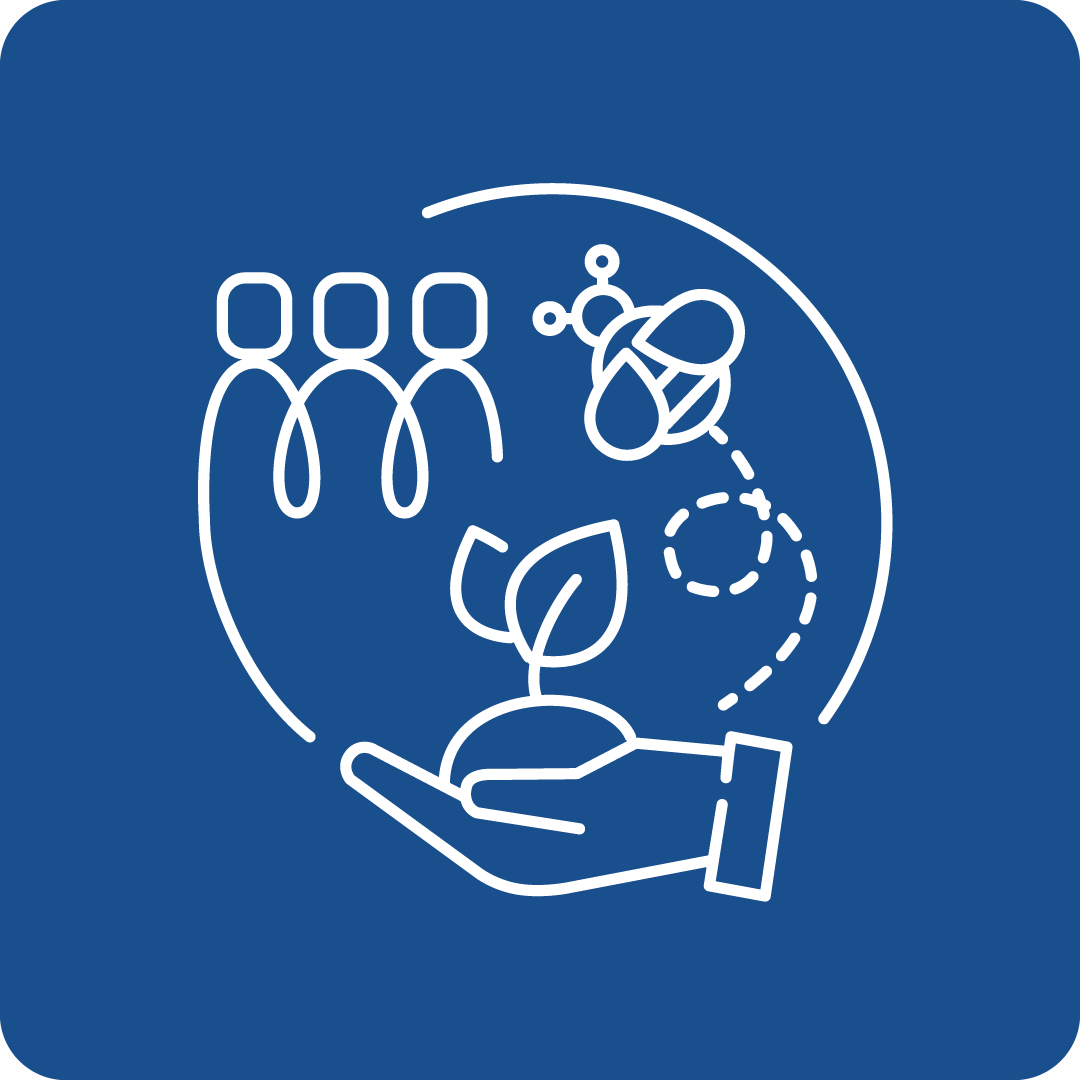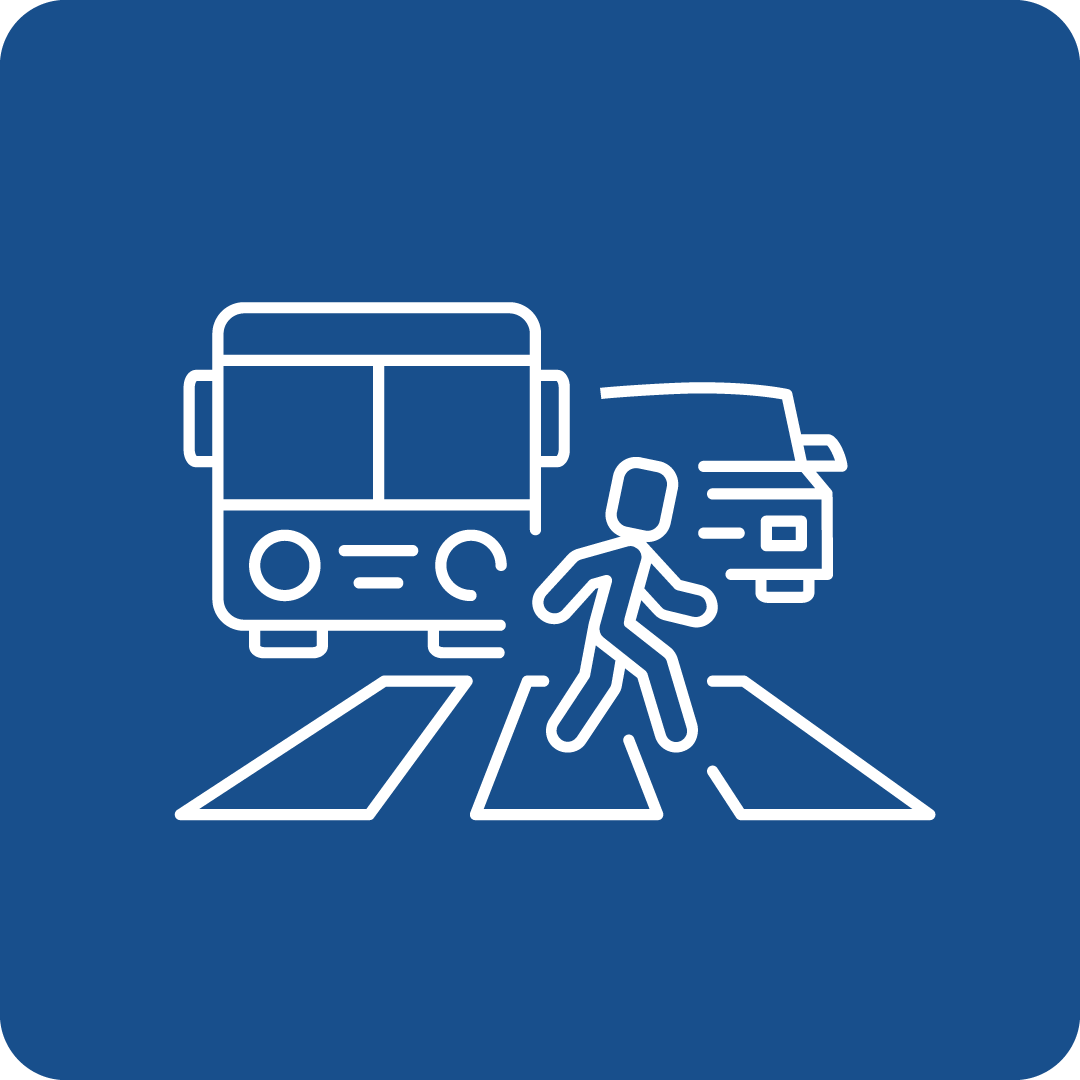Filter Search for grants
Call Navigation
Deadline expired
The deadline for this call has expired.
Call key data
EIT: Co-create New European Bauhaus Open Call 2025
Funding Program
European Institute of Innovation and Technology
deadlines
Opening
04.07.2024
Deadline
10.10.2024 17:00
Funding rate
75%
Call budget
€ 360,000.00
Estimated EU contribution per project
max. € 45,000.00
Link to the call
Link to the submission
Call content
short description
The Call focuses on demonstrating new solutions to boost the transformation of cities and rural and peri urban areas by bringing individuals and communities closer to nature, bringing a sense of belonging, addressing the needs of territories, and communities that need specific attention, and transforming value chains and the life cycle of materials towards circularity. The Call will identify inspirational, beautiful, sustainable and inclusive project proposals.
Call objectives
All proposals must comply with the following requirements to ensure that the project scope is appropriate:
- Proposals must involve the development of activities to improve selected public spaces and/or complement local policy/strategy whilst integrating all three core New European Bauhaus values (sustainability, aesthetics and inclusion) and all three New European Bauhaus key principles (multilevel, participatory and transdisciplinary approach) into their projects.
- The activities must be tailored towards at least two specific and clearly identified target groups (can be defined by age, profession, neighbourhoods of the same city, etc.). The proposal needs to include a communication and dissemination plan to engage with target groups in the given period.
- The proposed solution must have the potential to be implemented on a broader scale and/or replicated in accordance with a context-based approach. Proposals should aim for long-term sustainable impact.
- The proposal must demonstrate an in-depth understanding of the local ecosystem, including stakeholders, culture and social dynamics, and the role of the city / local authorities must be well defined.
- The proposed solution must use existing knowledge, innovative methodologies, tools or processes relating to target group behaviour with regard to the selected topic, promote real behavioural change and influence policymaking.
read more
Expected effects and impacts
Projects must comply with at least one of the expected outcome targets:
- Outcome A: Improved quality of a defined public space by implementing the NEB approach. The proposal must have a clear explanation of how and at what level the project contributes to achieve the selected NEB challenge, including a realistic and achievable plan.
- Outcome B: Improved quality of a public space through complementarity with a local policy/strategy and implementation of the NEB approach. The proposal must have a clear explanation of how and at what level the project will contribute to achieve the targets of the selected local policy/strategy, including a realistic and achievable plan. The project must provide clear evidence of implementation of the NEB approach. Some examples of specific types of local level official policies/strategies are included in the following non-exhaustive list:
- Public realm infrastructure plan or/and urban development plan or/and public realm improvement strategy
- Statement of the commitment from city/region on the relevant segment/area targeted by the project
- Sustainable Urban Mobility Plans (SUMPs)
- Sustainable Energy and Climate Action Plans (SECAPs)
- Zero Pollution Action Plan for 2030
- Waste management plans and/or waste prevention programmes
- Circular Economy Strategy or Action Plan
- Strategy on Adaptation to Climate Change
- Local Action Plan on Green urban areas and green infrastructure Sustainable Land Use & Soil strategy
- Nature Restoration Plan
- Farm to Fork strategy
- Biodiversity strategy for 2030
- Any action plans that can be supported by the project
- Net-Zero Industry Act
- EU industrial strategy
- Critical Raw Materials Act
In addition, all submitted proposals must meet at least one of the following expected outputs:
- OUTPUT 1: Products and services (including rapid product prototypes):
- enhancement of nature-based-solutions, promotion of green spaces and support for urban greening;
- responses to citizens’ real needs in urban and regional spaces, as well as improved accessibility and quality of experience for citizens in their daily lives, e.g. leisure, work, mobility and commuting;
- delivery of both online and offline (face-to-face) support, as well as public and private realm infrastructure and facilities with a focus on specific vulnerable populations, e.g. older people, children, ethnic minorities and marginalised groups;
- promotion of long-term use and thinking, and reduce by design, maintenance, reuse, refurbishment, remanufacture, repurposing and recycling of resources and waste, including digital and monitoring tools, and improvement of current state-of-the-art industrial manufacturing processes.
- OUTPUT 2: Co-design and co-stewardship of:
- green spaces and nature-based solutions through public-private partnerships and social participation;
- access to nature-based solutions and expansion of green spaces, as well as their collective stewardship;
- public realm and commons with civil society and other stakeholders to favour diversity, while strengthening inclusivity and equitability, as well as promotion of co-ownership and care of public and private spaces;
- urban regeneration in less favoured areas, including the most polluted zones, neglected or dangerous neighbourhoods, remote areas with poor communication and districts with limited services;
- transformation of the public space embedded in the urban ecosystem towards a circularity model, with consideration for sustainability, aesthetic and social aspects. For example, harvesting ambient water or energy for use on site or cycling nutrients locally to create an environment that supports biodiversity, human health and well-being
read more
Expected results
All proposals must address at least one of the EIT Community New European Bauhaus challenges described below.
1. Re-connecting with nature
The New European Bauhaus movement aims to create greater opportunities for contact with green public spaces that translate into better health and reduce income-related health inequalities. Nature-based solutions in cities can help address floods and other extreme weather events, whilst making the built environment more attractive. Climate action can improve air, water and soil quality and overall living conditions. The COVID-19 pandemic underlined the direct link between nature protection and physical and mental health for citizens. There is a need to go beyond a human-centred to a life-centred perspective, seeking inspiration from nature and learning from it.
Some examples of the types of projects that address this challenge are included in the following non exhaustive list:
- Urban greening, such as urban green corridors for active mobility.
- Rethinking of transport infrastructure.
- Interaction with citizens to encourage the take-up of green mobility solutions.
- Co-creation of green public spaces to exploit their potential, such as better refreshing/cooling for urban areas.
- (Re)naturalisation of degraded public areas, green areas, biodiversity, green and blue infrastructure, and urban furniture as assets that promote active mobility.
- Nature-based solutions for industrial sites and processes or old post-industrial sites, including the regeneration of degraded soils and wastewater streams.
- Support and promotion of green jobs and skills and futures literacy, including life-long learning through nature-based solutions.
- Solutions to enhance crop yield and resilience through the use of more sustainable soil and/or crop management and other practices to increase plant tolerance to stress (abiotic, biotic), including climate change.
- Solutions with credible potential to reduce greenhouse gas (GHG) emissions or mitigate biodiversity loss from the agrifood production chain, including solutions that target livestock, human diets and resource stewardship.
2. Re-gaining sense of community and belonging
The New European Bauhaus movement is about collective and private experience. Building bridges between people involves encouraging intergenerational solidarity, developing links between education and the arts in local environments, and improving common spaces and meeting places.
Some examples of specific projects that can be addressed are included in the following non-exhaustive list:
- Enhancement of degraded public areas.
- Increased accessibility and interconnection of public spaces via more sustainable means of transport.
- Promotion of multiple uses of public spaces by citizens to create the conditions for enhanced cultural exchange.
- Promotion of proximity economy activities to allow citizens to access key services and amenities within walking distance, thus strengthening connections and fostering healthy, sustainable and active mobility.
- Repurposing and/or refurbishment of public spaces to serve as catalysts to rediscover local communities and integrate newcomers.
- Demonstration of the interconnectedness of sustainability, resilience and community through multifunctional activities that address all three concepts in a mutually reinforcing manner.
- Manufacture of solutions to help build more human-centric, sustainable and resilient industry that places the well-being of workers at the centre of production processes.
- Enrichment of food culture with local identity and food authenticity as a means of reducing food fraud and boosting consumer confidence in sources and quality.
- Promotion of food supply-chain optimisation, minimisation of food loss and waste and modification of the demand curve by setting up innovative systems that promote value-chain relationships.
3. Prioritising places and the people that need them the most
The New European Bauhaus movement promotes the inclusion of all citizens, as well as of the places where they live. Beautiful and sustainable solutions have to be affordable and accessible for all. Special attention should be paid to the specific circumstances of the most vulnerable groups and individuals, such as those at risk of exclusion or poverty and those experiencing homelessness. Disadvantaged groups are at greater risk of energy poverty and of suffering the effects of air pollution and have poorer access to public transport. Inclusion also requires that all approaches be designed in such a way that accessibility barriers to the built and virtual environments and to goods and services are removed. NEB transcends major city centres to encompass places in all their diversity, including small villages, rural areas, shrinking cities, neglected neighbourhoods, suburbs and de-industrialised areas. This calls for planning to avoid the spatial segregation of social groups and to create a sense of togetherness. It is crucial to connect the various parts of cities, villages and neighbourhoods.
Some examples of specific projects that can be addressed included in the following non-exhaustive list:
- Solutions that address poor transport links between rural and urban areas.
- Solutions aimed at universal mobility as a key enabler of social inclusion so that everyone can move freely within cities, regardless of gender, race, beliefs or disability.
- Climate justice initiatives that focus on equitable distribution of housing and living conditions.
- Green solutions that address social issues, in line with the ‘build back better’ principle.
- Proposals that encompass social manufacturing, including those that involve less favoured groups or groups at risk of social exclusion in product manufacturing.
- Co-design and testing, together with citizens, of affordable food products and/or ingredients customised for vulnerable target groups (older people, children, etc.), including data standardisation for targeted nutrition.
4. Prioritising the need for long-term, life cycle and integrated thinking in the industrial ecosystem
The New European Bauhaus movement promotes an economy based on circularity to tackle unsustainable practices, including resource uses for obsolete buildings or infrastructures. Addressing these challenges concerns the entire industrial ecosystem, from production to delivery and consumption, with a circular economy mindset. Recovered and renewable materials should be better recognised by all relevant disciplines and become part of design paradigms. The use of sustainably produced and procured nature based building materials, such as wood, bamboo, straw, cork, or stone should be improved. New production technologies should help reduce the carbon footprint of steel or cement, recycle otherwise wasted textiles and accelerate the green transition of energy intensive industries. New business models, bioeconomy, social economy approaches, and Design for Sustainability can support the transformation of sectors such as textiles, tourism, waste management or energy production. The digital transition will play a systematic role in the development and implementation of the New European Bauhaus.
Some examples of specific projects that can be addressed are included in the following non-exhaustive list:
- Activities to promote products and services for long-term use.
- Reduce by design, as well as, maintenance, reusing, refurbishing, remanufacturing, repurpose and recycling of resources and waste, including digital and monitoring tools.
- Improvement of current state-of-the-art of the manufacturing industries.
- Public and multi-stakeholder activities fostering circular economy actions, namely with regards to resources, waste, product life extension and second life of products, and more efficient management of sources.
- Activities targeting unsustainable mindsets or behaviours in specific social groups to maximize the potential impact.
- Activities of decentralised, local and urban manufacturing designing and/or demonstrating symbiotic and sustainable factories closer to the customer including integrating new and traditional techniques, local crafts, and knowledge to foster innovation in manufacturing.
- Circular mobility including shared mobility, satisfying user needs without transferring ownership of physical products through shared solutions.
- Solutions for the sensibilities and aesthetics of the circularity concept as user experience; combining circular and cleantech solutions for long-term effect.
- Leveraging existing innovations promoting circularity and market opportunities in the agri-food systems and a circular model maintaining the value of food in the economy for as long as possible.
- Co-creation of innovative, sustainable packaging concepts to reduce food spoilage.
read more
Eligibility Criteria
Regions / countries for funding
Moldova (Moldova), Albania (Shqipëria), Armenia (Հայաստան), Bosnia and Herzegovina (Bosna i Hercegovina / Босна и Херцеговина), Faeroes (Føroyar / Færøerne), Georgia (საქართველო), Iceland (Ísland), Israel (ישראל / إِسْرَائِيل), Kosovo (Kosova/Kosovë / Косово), Montenegro (Црна Гора), New Zealand (Aotearoa), North Macedonia (Северна Македонија), Norway (Norge), Serbia (Srbija/Сpбија), Switzerland (Schweiz/Suisse/Svizzera), Tunisia (تونس /Tūnis), Türkiye, Ukraine (Україна), United Kingdom
eligible entities
Education and training institution, International organization, Non-Profit Organisation (NPO) / Non-Governmental Organisation (NGO), Other, Private institution, incl. private company (private for profit), Public Body (national, regional and local; incl. EGTCs), Research Institution incl. University, Small and medium-sized enterprise (SME)
Mandatory partnership
Yes
Project Partnership
This Call for Proposals is open to all legal entities established in Member States of the European Union, and/or in Third countries associated to Horizon Europe. These legal entities may be, for example, public or private legal entities, small and medium-sized enterprises (SMEs), educational institutions, research and technology organisations, consultancies, NGOs or social entities. Applications from Regional Innovation Scheme (RIS) countries are encouraged.
All proposals must be composed of a consortium with a minimum of two and a maximum of four partners located in an EU Member State or a Third Country associated to Horizon Europe. At least two of these partners must be independent of each other and one must be a city, region or an entity affiliated with a city or region. In the case no city or region is involved in the project, the entity affiliated with a city or region must upload together with the application form, either the legal registration/official document that proves the legal affiliation with said city/region or a declaration of affiliation signed by the legal representative of the affiliated entity that proves the legal affiliation with said city/region. Applicants can access the template for the Declaration on the Call webpage.
Proposals with fewer than two partners or more than four partners will be ineligible. Proposals without the participation of a city, a region, or an entity affiliated with a city or region will also be ineligible.
other eligibility criteria
Entities established in Switzerland are eligible to participate but at their own cost. These entities will not receive EIT funding; instead, they will be funded by the Swiss government. Applicants from Switzerland are requested to contact the State Secretariat for Education, Research and Innovation (SERI) for further details.
Additional information
Topics
Relevance for EU Macro-Region
EUSAIR - EU Strategy for the Adriatic and Ionian Region, EUSALP - EU Strategy for the Alpine Space, EUSBSR - EU Strategy for the Baltic Sea Region, EUSDR - EU Strategy for the Danube Region
UN Sustainable Development Goals (UN-SDGs)
![]()
![]()
![]()
![]()
![]()
![]()
![]()
Additional Information
Before starting a proposal, all applicants (Project Leader and consortium partners) must follow the following steps:
- STEP 1: register in the EU Funding & tender opportunities portal to obtain the nine-digit Participant Identification Code (PIC number). If an organisation has already a PIC number, there is no need to register again.
- STEP 2: access the new EIT UM NetSuite platform, by submitting the Partner Information Form (PIF). NB: For organisations that previously participated in an EIT Urban Mobility project, and therefore are already registered in the PLAZA platform, do not submit the PIF form but contact the EIT UM Service Desk servicedesk@eiturbanmobility.eu: you will be provided with the credentials to access the new NetSuite platform.
- STEP 3: access the EIT UM NetSuite platform and find the open calls under menu --> Call for Proposals --> Open Calls.
The following documentation must be submitted by the Lead Applicant through NetSuite no later than 10 October 2024 at 17:00 CET.
- Application Form (mandatory)
- Annexes to the Application form: Registration document/Declaration of affiliation (mandatory only if applicable), Project Gantt Chart (optional)
Call documents
Co-create New European Bauhaus Open Call 2025 call manualCo-create New European Bauhaus Open Call 2025 call manual(605kB)
Contact
To see more information about this call, you can register for free here
or log in with an existing account.
Log in
Register now






